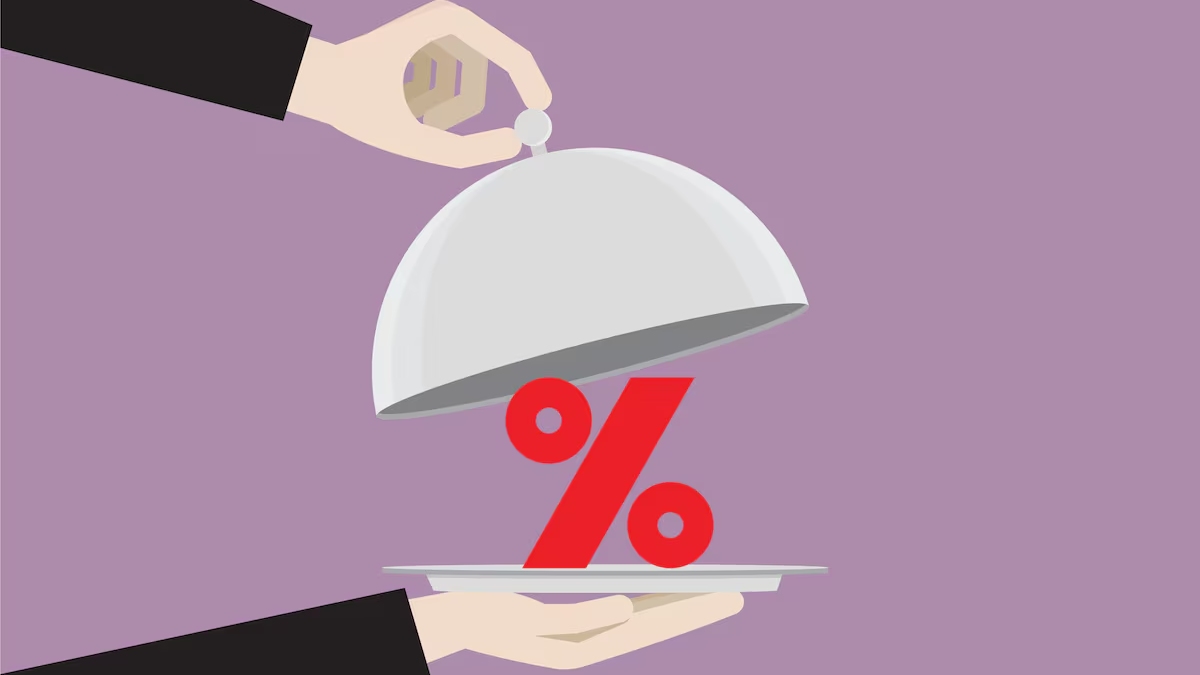Startup
Do You Want to Tip More? Emojis Increase Tips by 30%, According to a Study

Tipping is one of the most controversial personal finance topics. Even though we may be adamant about our own tipping practices, a recent study discovered that emojis on bills actually make us tip more.
Indeed, in certain situations, a straightforward smiley face emoji can increase tips by more than thirty percent.
The researchers examined how emojis were used in three scenarios where tips were given: a full-service restaurant accepting credit or debit payments; a food delivery app; and a chain restaurant where you stop for takeout on your way home from work. Emojis corresponding to predetermined tipping percentages were displayed.
A neutral face was displayed for the 10% option, and increasing smiley faces were displayed for the 15%, 18%, 20%, and 25% of the options. There was also a sixth option, “other,” that featured a contemplating emoji.
Emojis on the payment terminal raised the average tip in the full-service restaurant by 2.52 percentage points (from 22.86 percent to 25.38 percent), or an 11 percent relative increase. Emojis increased the average tip to 16.11 percent from 14.66 percent in the food delivery app condition (which excluded the 25 percent preselected option), for a 9.9 percent relative increase. Additionally, emojis at the time of payment increased tips to an average of 16.75 percent from 12.61 percent in the takeout order condition—a staggering relative increase of 32.8 percent.
Emojis, according to researchers, have an emotional impact on transactions that encourage prosocial behaviors like leaving tips.
Emoji usage appears to be nothing more than an evolution of methods and instruments that have been used for a long time to extract as many suggestions as possible from customers.
Previous studies support our suspicions: we tip more when a server uses our names and introduces themselves when serving us. We tip extra when we receive a gift with a check, like candy or a piece of chocolate. We leave a larger tip when we receive a handwritten thank you note on the bill. We also tip more when the bill is given to us in a folder. If the folder is gold instead of black, we tip even more.
However, there are other factors, like the weather and restaurant location, that have an impact on the tips we leave that are unrelated to the quality of the service.
Since electronic payment terminals and apps have been gradually introduced, the capacity to control tipping behavior has increased dramatically. It appears that default tipping options have grown more quickly than inflation. The basic purpose of tipping has been called into question when we are asked to tip in a quick-service restaurant before our food is delivered, or worse when we are asked to tip in a self-service, grab-and-go setting. Is it a wage subsidy or a good service?
The fact that we are being tricked into breaking our own tipping policies using a variety of psychological and technological tools is a major source of tension surrounding the state of tipping culture in 2024. For instance, a person may have grown up with a personal policy in which 10% is the minimum tip required by default. However, upon encountering a terminal containing three preselected options, the lowest of which is 15%, they may change their mind.
It is expected that you will select one of these options quickly, but you will also need to locate the “other” option and enter the percentage tip you wish to leave if you want to stick to your 10-percent floor for what you consider to be subpar service. all while the person receiving it is in front of you. Many will immediately violate their personal tipping policy to avoid feeling anxious.
To exacerbate the situation, an excessive amount of people may argue that higher percentage options make sense because tips should rise in line with price increases. In addition to exhibiting a total ignorance of percentages, the opinions of others feed the need to fit in and avoid social rejection.
Tipping used to be very important, but it was never only about being happy with the service you received. Now, it appears that every other factor that influences the tips we pay is more important. The study demonstrates that emojis are the newest piece in this puzzle. Although they may come across as a helpful prod, their influence is real.
It serves as a reminder that the symbols that permeate our digital communications are powerful instruments that can alter the nature of economic interactions significantly.
-

 Sports4 weeks ago
Sports4 weeks agoFIFA Club World Cup 2025: Complete List of Qualified Teams and Groups
-

 Sports3 weeks ago
Sports3 weeks agoAl Ahly vs Inter Miami, 2025 FIFA Club World Cup – Preview, Prediction, Predicted Lineups and How to Watch
-
Health1 week ago
Back to Roots: Ayurveda Offers Natural Cure for Common Hair Woes
-

 Tech2 weeks ago
Tech2 weeks agoFrom Soil to Silicon: The Rise of Agriculture AI and Drone Innovations in 2025
-

 Sports3 weeks ago
Sports3 weeks agoFIVB Men’s Volleyball Nations League 2025: Full Schedule, Fixtures, Format, Teams, Pools and How to Watch
-

 Startup3 weeks ago
Startup3 weeks agoHow Instagram Is Driving Global Social Media Marketing Trends
-

 Television4 weeks ago
Television4 weeks agoTribeca Festival 2025: Date, Time, Lineups, Performances, Tickets and How to Watch
-

 Sports3 weeks ago
Sports3 weeks agoWorld Judo Championships 2025: Full Schedule, Date, Time, Key Athletes and How to Watch













